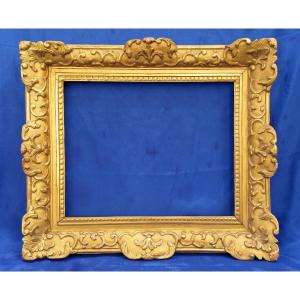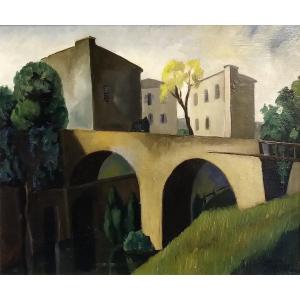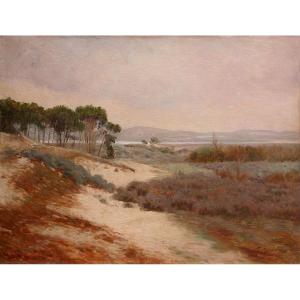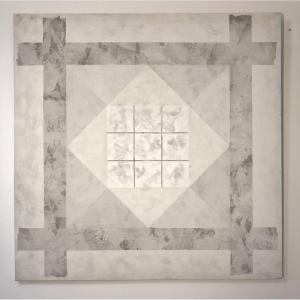Luc-Albert Moreau is a painter, engraver, lithographer and French illustrator, close in his early days to the group known as the Black Band, then the Golden Section. After abortive law studies, but graduating from the School of Oriental Languages, Luc-Albert Moreau entered the Julian Academy in 1905 and attended the workshop of Jean-Paul Laurens where he became friends with André Dunoyer de Segonzac. Two years later, he joined the Palette academy, near the Montparnasse district: in addition to Dunoyer de Segonzac, he was close to Jean-Louis Boussingault, and the trio went on vacation to Saint-Tropez during the summer 1908 and painted together. Moreau lived at this time at 15 rue du Cherche-Midi. He exhibited at the Salon des Indépendants for the first time that year. The painter Valdo Barbey is also his friend. From the beginning, he was close to the group known as the Bande Noire. From November 20 to December 16, 1911, he exhibited as part of the Norman Society of Modern Painting which organized his first Parisian exhibition, at the Gallery of Ancient and Contemporary Art located at 3 rue Tronchet, then, in 1912, alongside the Cubists, at the Autumn Salon, then at the Golden Section, and finally, he was invited by the members of the Blaue Reiter to exhibit in Munich. Mobilized in August 1914, appointed infantry lieutenant, he was seriously injured in June 1918 in Compiègne: during these years which marked him terribly, he executed numerous drawings, from which he took the War Suite, one of his most beautiful engraved works. After the war, he devoted himself to the art of lithography and composed the suite entitled Physiology of Boxing (1926-1929), which was a landmark in sporting iconography. In 1919, he was elected vice-president of the Society of Independent Artists. In 1925, he bought Charles Camoin's house in Saint-Tropez with André Villeboeuf and André Dunoyer de Segonzac and renamed it “Le Maquis”. Through Hélène Jourdan-Morhange, his companion, who was the widow of the painter Jacques Jourdan, he became friends with the musician Maurice Ravel, the engraver Daragnès and Colette. The couple, living in Paris, regularly go to what Hélène Jourdan-Morhange calls "Luc-Albert Moreau's little cottage", Le Petit Moulin or "Manigot" in Les Mesnuls, near Montfort-l'Amaury where they found Ravel's home, the Belvédère. In 1946, after twenty years of living together, he married Hélène Jourdan-Morhange in Paris in private. At the beginning of 1947, he designed the costumes for Khamma by Claude Debussy, given at the Théâtre de l'Opéra-Comique at the end of March. He died on April 29, 1948 in Paris. He is buried with Hélène Jourdan-Morhange in the Mesnuls cemetery.




































 Le Magazine de PROANTIC
Le Magazine de PROANTIC TRÉSORS Magazine
TRÉSORS Magazine Rivista Artiquariato
Rivista Artiquariato